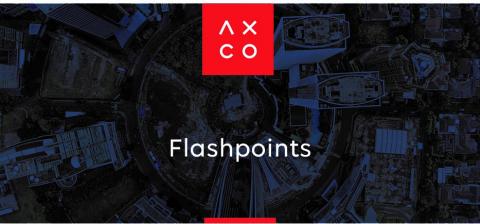Axco Flashpoints: Ethiopia's Megadam and Al Qaeda vs. The Islamic State
ETHIOPIA’S MEGADAM GENERATES A FLOOD OF ILL WILL
To Ethiopians, the naming of the Grand Ethiopian Renaissance Dam is by no means hyperbolic. The USD 4.6bn hydroelectric Blue Nile dam, which began filling in July, is eventually expected to generate 6,000 megawatts of electricity, enough to end domestic power shortages, boost industrialisation and turn Ethiopia into an energy exporter. Prime Minister Abiy Ahmed is leaning heavily on this narrative of national rejuvenation to bind a fractious federation together.
Less enthusiastic are Sudan and Egypt, Ethiopia’s downstream neighbours. Both strongly oppose the dam, claiming that it will limit vital water supplies. Although talks are set to continue into 2021, years of failed negotiations with mediation from the US, World Bank, and African Union set a poor precedent. Sudan, which is less parched owing to its access to the White Nile, has emphasised a diplomatic solution, but Addis Ababa rejected its recent joint management proposal outright.
Egypt, however, considers the issue more pressing; a matter of “life and death” according to Foreign Minister Sameh Shoukry. Over 90% of Egypt’s population live close to the Nile and rely on the river to provide drinking water and support agriculture. Cairo’s concern is such that since ground was broken on the project in 2011, successive governments have mused bombing the dam. Regardless, an imminent ‘water war’ is unlikely. President Al Sisi is distracted by rising COVID-19 cases, while the government scrambles to formulate a meaningful response to recent developments in neighbouring Libya.
This precarious peace may not hold, however. Currently, 10% of Egyptians are affected by water scarcity, but climate change could push that to 35% by 2040. In addition, the dam could reduce the water flowing through Egypt by a quarter. With up to 80 million Egyptians facing a drastic reduction in their access to water, Cairo may one day decide that without a diplomatic solution destruction of the dam is an existential necessity.
A WAR WITHIN A WAR: AL QAEDA VS ISLAMIC STATE IN THE SAHEL
The embattled Sahelian nations of Mali, Niger and Burkina Faso have been reeling from a series of unprecedented attacks by Islamist militants since late 2019. These attacks killed hundreds and called the effectiveness of large UN and French military deployments into question. The culprits were local affiliates of two of the world’s most notorious terrorist organisations, Al Qaeda and the Islamic State: Jamaat Nusrat al-Islam wal-Muslimin (the Group to Support Islam and Muslims – JNIM) and Islamic State in the Greater Sahara (ISGS). Elsewhere, other affiliates are in open conflict, but here they had actively cooperated for years.
As their campaign progressed, however, this pact rapidly unravelled. Recent successes brought them into direct competition for territory and recruits; in particular, defections from the more established JNIM to the rapidly expanding ISGS appear to have stirred resentment. Ideological differences that had lain dormant while both groups focused on entrenching themselves in local communities and criminal networks surfaced after the Malian government signalled it wanted to negotiate. JNIM announced it was open to the prospect, while ISGS denounced any talks as capitulation. By May 2020, they were trading suicide bombings.
This is not the lucky break for the region’s beleaguered governments that it might appear. The split could create even more intense and fragmented conflict as each group is compelled to mobilise aligned militias, launch more spectacular attacks and generally seek an advantage at a moment that local armed forces and governments are under exceptional strain from spiralling violence and COVID-19. It may preclude any attempts to negotiate a settlement that could reduce the bloodshed and derail the fragile peace process with Mali’s Tuareg separatists who first plunged the Sahel into crisis in 2012. The terror offensive has already sparked a chain reaction of clumsy military reprisals, intercommunal violence and political turmoil: another layer of complexity makes the prospect of peace even more distant.

